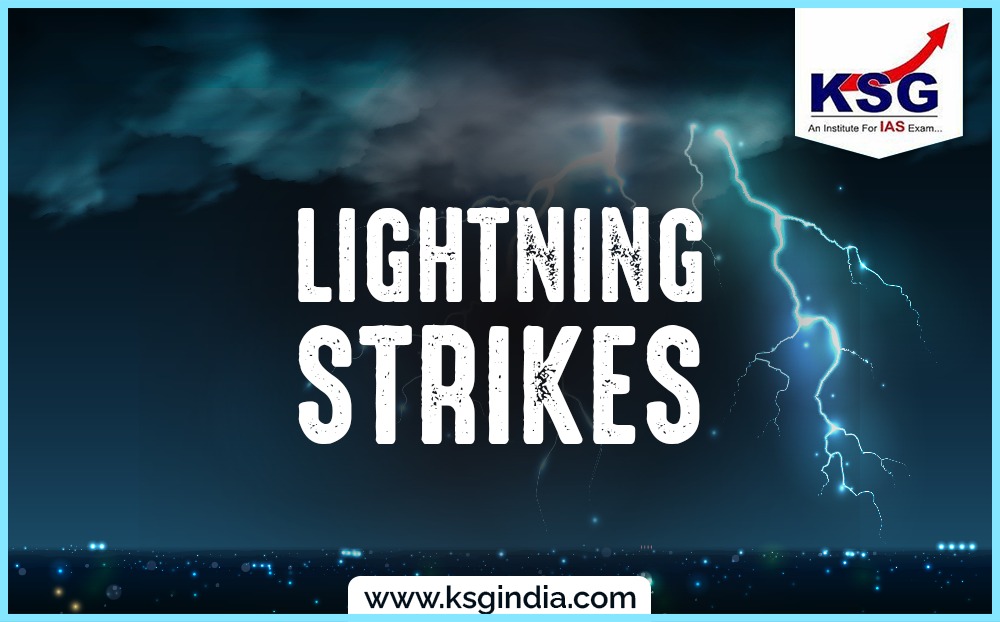Lightning strikes

At least 74 people have been killed in lightning strikes in the past 24 hours in Rajasthan, Uttar Pradesh, and Madhya Pradesh.
Lightning strikes

At least 74 people have been killed in lightning strikes in the past 24 hours in Rajasthan, Uttar Pradesh, and Madhya Pradesh.
What is lightning strike?
- Lightning is a very rapid and massive discharge of electricity in the atmosphere, some of which is directed towards the Earth’s surface.
- These discharges are generated in giant moisture-bearing clouds that are 10-12 km tall. The base of these clouds typically lies within 1-2 km of the Earth’s surface, while their top is 12-13 km away. Temperatures towards the top of these clouds are in the range of minus 35 to minus 45 degrees Celsius.
- As water vapour moves upward in the cloud, the falling temperature causes it to condense. Heat is generated in the process, which pushes the molecules of water further up.As they move to temperatures below zero degrees Celsius, the water droplets change into small ice crystals. They continue to move up, gathering mass — until they are so heavy that they start to fall to Earth.This leads to a system in which, simultaneously, smaller ice crystals are moving up and bigger crystals are coming down.
- Collisions follow, and trigger the release of electrons — a process that is very similar to the generation of sparks of electricity. As the moving free electrons cause more collisions and more electrons, a chain reaction ensues.
- This process results in a situation in which the top layer of the cloud gets positively charged, while the middle layer is negatively charged. The electrical potential difference between the two layers is huge — of the order of a billion to 10 billion volts. In very little time, a massive current, of the order of 100,000 to a million amperes, starts to flow between the layers.
- An enormous amount of heat is produced, and this leads to the heating of the air column between the two layers of the cloud. This heat gives the air column a reddish appearance during lightning. As the heated air column expands, it produces shock waves that result in thunder.
Lightning strikes in India:
Thunderstorms accompanied by lightning strikes (usually in the pre-monsoon and monsoon months) are the single-largest killers among natural disasters (extreme weather events) in India, according to National Disaster Management Authority (NDMA). Lightning strikes have killed at least 2,000 people every year in India since 2004 according to India Meteorological Department (IMD).
